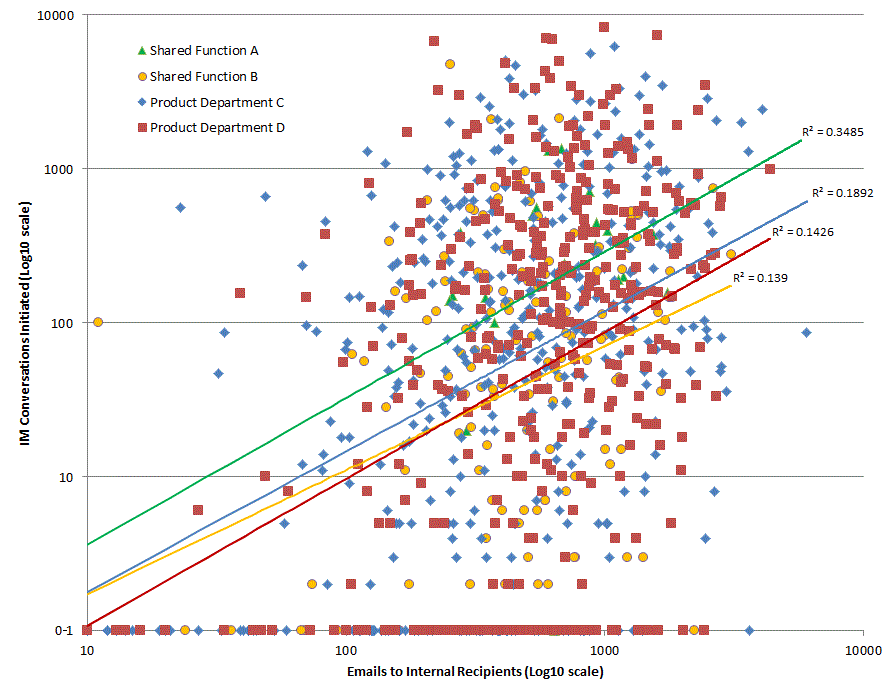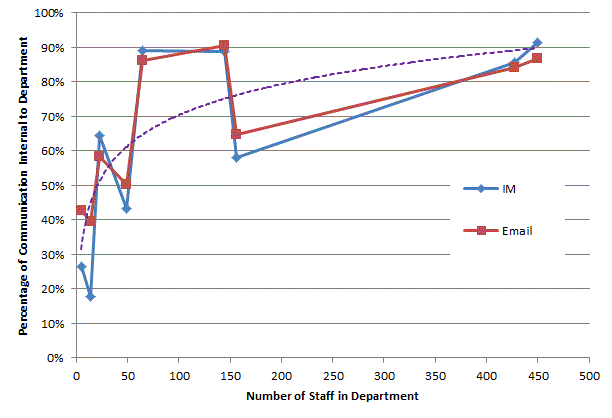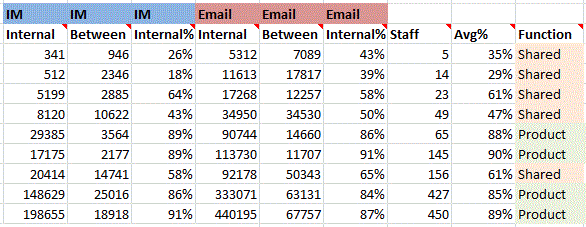Any organisation that wants to understand the human interactions that drive the organisation will want to use all available data that adds value. The question is it worth the effort of collecting and including Instant Message (IM) data as well as email. I previously looked at an organisation from a departmental level where it could be seen that Email and IM interactions were consistent and adding IM data did not provide additional insight. Starting to look more at individuals the question is does IM data add additional information of value? My starting point is to plot the volume of Email sent by an individual (to recipients internal to the organisation) against the volume of IMs they initiated (again limited to internal parties). The data is also broken down by departments; I’ve included four fom my previous examination of department-level internal and external interactions:
Visually this plot shows there is very little correlation between the volume of Email and the volume of IMs a person in the organisation generates. There are quite a few people in the organisation who do not use the internal IM system and these are clustered on the x-axis; this study is not exploring why this is but it is probably related to the relative newness of IM within the organisation. The departments do not appear to differ significantly in the distributions although Shared Function A does tend to prefer IM more than the other departments do. In my opinion this plot reveals that it is worth continuing to look at the value of IM data.

 Follow
Follow
